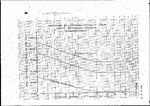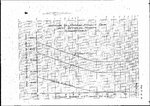drgondog
Major
Reading the 'America's hundred thousand', one can find two different Cd0 values for the P-47. One being 0.0213 (pg. 113), another one being 0.251 (pg. 598 ). Ie. the 1st value is in the ballpark with Spitfire (single stage engine) or P-39, another one seem much more believable. IIRC The Fw-190A (A-3?) was credited with CdO of ~0.0245.
I'll ask people to share their data here, about all radial-engined fighters
Tomo - there are a couple of points regarding Dean's values. First the ,0213 value for pg 113 and pg 592 are for the P-47B, whereas pg 598 zero lift incompressible parasite drag of .0251 is for P-47D. In Dean's Performance tables all the CDo are THEORETICALLY those for 250 mph at 10,000 feet - but unless you read the reports and look at Drag vs RN for the Validated Wind tunnel tests, you will never know.
Dean does not specify the RN, which is crucial for RN of < 20 Million based on Mean Aero Chord. For the value .0176 for the P-51D, the reference report NA Report NA-46-130 dated 2/6/46 presents CDmin = .0174 at RN=2x10^^6 which for MAC of 6.63 ft is about 146mph (I'll have to double check). If you look at the Drag vs RN chart for the P-51D, you will see that his .0176 value does NOT include racks, surface roughness, leaks, gun ports. When you add those factors, the actual CDo rises to .0192 at 2X10^^6 RN. Without Racks, the CDo is .0185
At 250 mph at SL, the RN=~15.4x10^^6. If you go to page 112, Graph 11, you will see that the Cdo drops from a high value on LH side of 2x10^^6 to a steady state value for RN>20x10^^6. This chart seems to be the P-51D total Drag (incl everything but racks) at SL, from the report he references.
At 10000 feet and 250mph the CDo for the P-51D from that report is close to 11.3 x10^^6. At that altitude and TAS for the P51D absolutely clean (no racks) the CDo= ,0165.
With Racks = .0173 which is close to the value he uses (I could also be off on the interpolation) for the P-51D.
He made a comment that typical WWII fighter RN's were in the 5-8million range - not so, they were above 20 million for medium high speeds.
Summary - If we take all the values from Dean's 100,000 as values for CDo at 250mph and 10,000 feet as correctly extracted and normalized to the specific RN for each fighter at 250/10K based on their MAC, then the numbers seem rational.
PS - I agree with Timppa that the .0215 CDo is Not for the P-47D. For similar reasons I do not believe the F8F CDo at 250mph/10K is below .025 in combat condition with a NACA 23018 wing.
Last edited:




